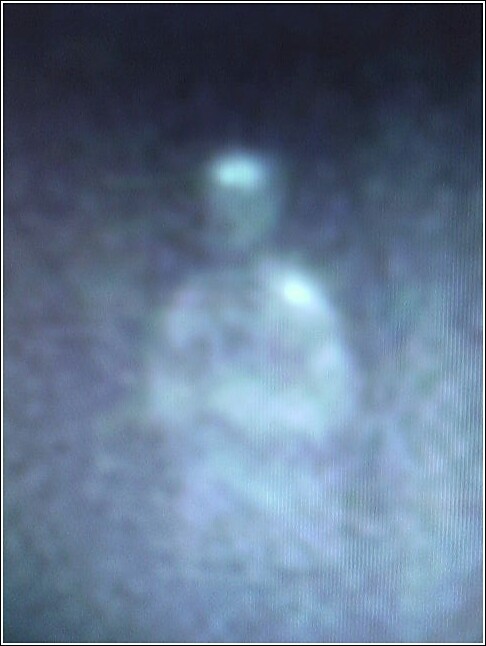 My husband, Bill, has been working as a Security Officer at the Salt Lake City and County Building for several months now. Not long after he started working there he drove me past the building. I took one look at this ancient building and said "Cool, it looks haunted." I was surprised when he answered back "It is!"
My husband, Bill, has been working as a Security Officer at the Salt Lake City and County Building for several months now. Not long after he started working there he drove me past the building. I took one look at this ancient building and said "Cool, it looks haunted." I was surprised when he answered back "It is!"It wasn't until three weeks ago that I had a chance to actually go inside the building and get a tour of it. I was kind of nervous and excited to do so. I had heard so many neat stories from my husband of the ghosts that live there.
These photographs were taken by a security officer on the graveyard shift that relieves my husband at night. I think they are kind of cool with all the colors that came out in them.

This first one is the one they call the angel. I don't think angels have wings but if there is one there I sure hope he is watching over the two little children that are suppose to haunt the place. They go around unlocking doors and run up and down the halls.
My husband hasn't seen or heard them but he has seen and heard the ghost dog there. Supposedly a blind man beat his service dog to death in the building. The ghost dog can be heard to growl out from under the desks. Bill has seen him run past in the halls.
The first experience he had with the dog was when he opened a door to an office one evening and saw the dog laying in front of the fireplace. It just lifted his head and look at him. My husband just slowly backed out of the office and closed the door behind him. That must of been kind of neat.
Well, like I was telling you I finally got my tour of the notorious haunted place and I can tell you I didn't see or hear anything. I didn't even get a goose bump on the arm. Kind of disappointing. The only thing that happened was I felt dizzy and weird when I stood on the balcony or looked down the stair wells. But that could be because I am afraid of falling, weirdly so ever since my near death experience. Some ghost people say you get light headed when a ghost is around, me I just think it was a dizzy spell that comes and goes.
It wasn't until after I left the building that I had this feeling someone was standing behind me. Now I have been kind of used to knowing when spirits are near me and it sure had all the signs of it. The only thing was I couldn't see who it was because it was out of my line of vision. If I had eyes in the back of my head I could of seen who was there.

All that afternoon and into the evening I had this presence following me all over the house. When darkness came I was scared. Not frightened scared just creeped out scared. So I started to talk to it. Ok, we are going out to the car to go pick Bill up from trax. Make sure you come with me. As we drove I just couldn't bring myself to look in my rear view mirror. I was afraid I would see some creepy misty man in the mirror. I made sure to tell the spirit sitting in the back seat that when we got to trax they needed to get on it and it would take them back home to the building. I just didn't want them to follow me anymore.
Trax finally came my husband got into the car and we started talking and I forgot all about feeling creeped out about the visiting ghost. It wasn't until I was glancing in my review mirror that I realized whomever had been with me was now gone. Hopefully they made it back to the City and County Building or found another nice place to haunt along the way.
I'm not prejudice against ghosts. I just happen to prefer the spirits with a message and not the annoying kind with no purpose. It was with mixed emotions that I had to go back to the City and County Building with my husband today. I really didn't relish going in there and having someone follow me home. I did see creepy things but I think it had something to do with it being Halloween.
When I left I just had to talk to myself and "whomever" was following and tell them to stay put it just wasn't a night they should be out. Anyways, the only ghosts invited to my home are the ones that can unravel some brick walls. So far it doesn't appear that I had any takers.
See ya tomorrow, for tomorrow is always another genealogy day!
